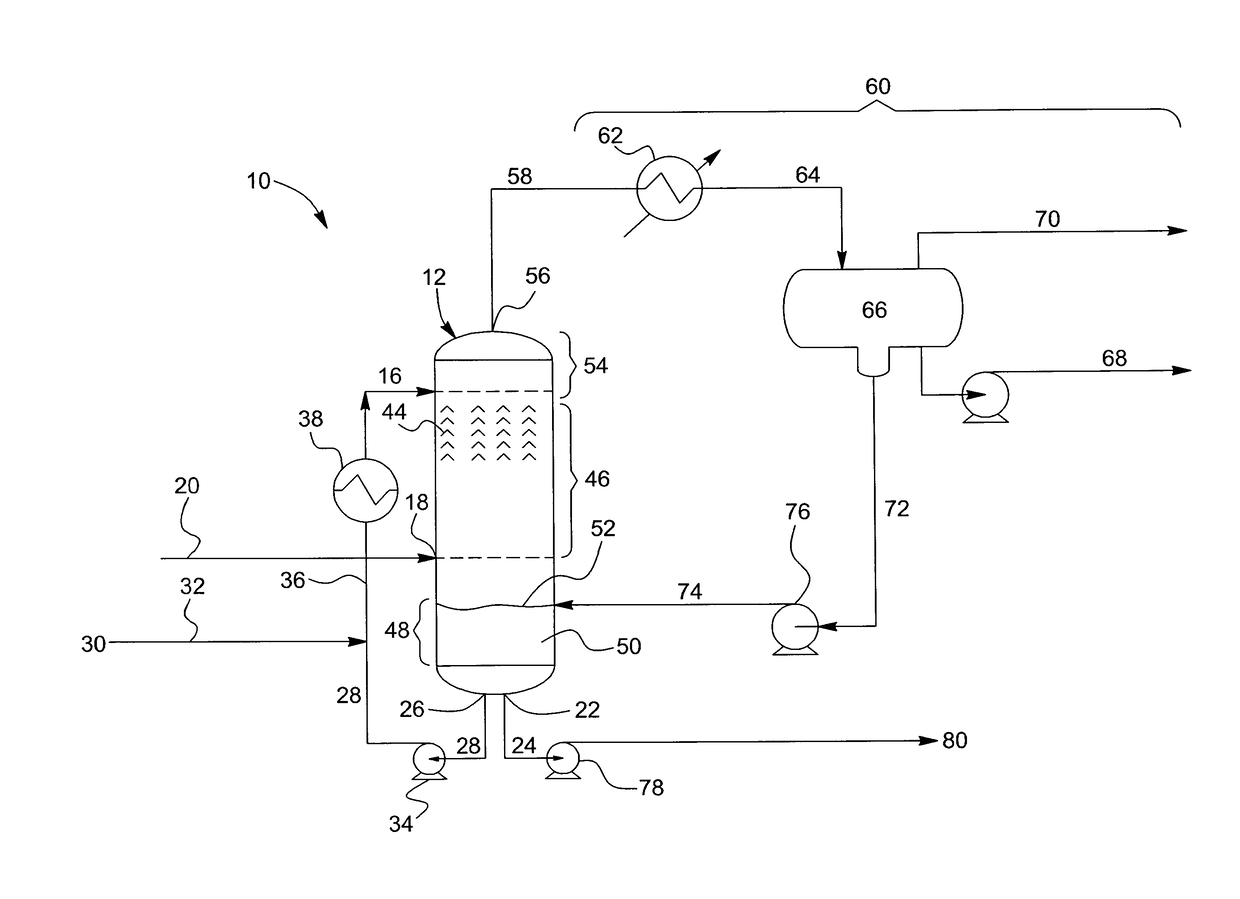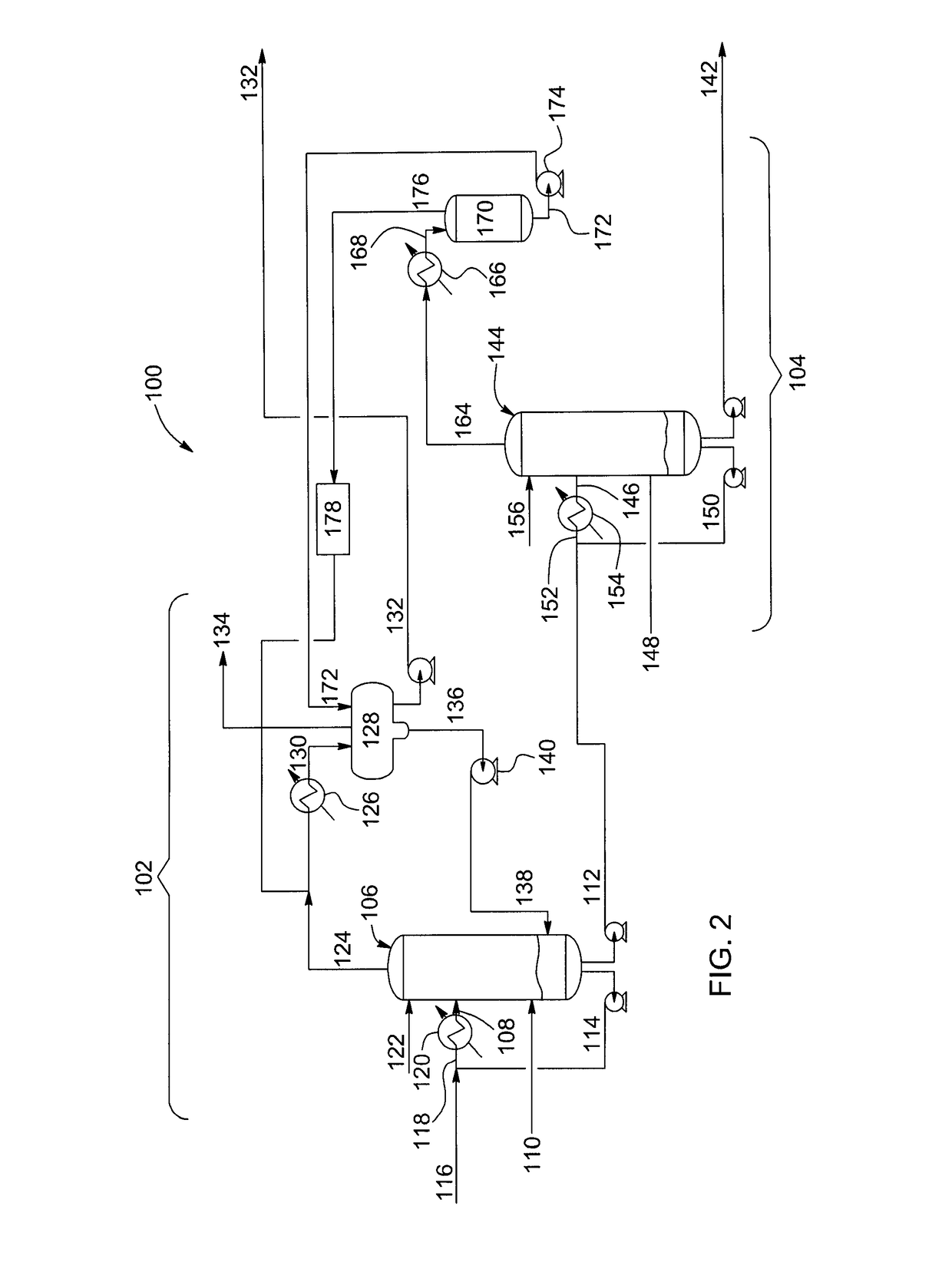Process and unit for solvent recovery from solvent diluted tailings derived from bitumen froth treatment
a bitumen froth treatment and solvent recovery technology, applied in solvent extraction, extraction purification/separation, separation processes, etc., can solve problems such as short circuiting, affecting recovery and unit reliability, and increasing the time required for diluent separation
- Summary
- Abstract
- Description
- Claims
- Application Information
AI Technical Summary
Benefits of technology
Problems solved by technology
Method used
Image
Examples
Embodiment Construction
[0099]According to an embodiment of the present invention, the process and unit allow improved control of feed flow and temperature that set the enthalpy input to the flash column, thereby achieving high solvent recoveries.
[0100]Referring to FIG. 1, illustrating an embodiment of the present invention, a tailings solvent recovery unit 10 is provided and comprises at least one tailings stripping column 12 having a tailings inlet for providing the tailings feed 16, a steam inlet 18 for providing steam 20, a solvent recovered tailings outlet 22 for withdrawing a portion 24 of the solvent recovered tailings for further treatment or processing, and a recycle outlet 26 for recycling recycled solvent recovered tailings portion 28 of the bottoms.
[0101]Further upstream, froth treatment tailings 30 are provided to the tailings solvent recovery unit10 via a froth treatment tailings line 32. The froth treatment tailings 30 are combined with the recycled solvent recovered tailings 28, which are s...
PUM
| Property | Measurement | Unit |
|---|---|---|
| temperature | aaaaa | aaaaa |
| temperature | aaaaa | aaaaa |
| temperature | aaaaa | aaaaa |
Abstract
Description
Claims
Application Information
 Login to View More
Login to View More - R&D
- Intellectual Property
- Life Sciences
- Materials
- Tech Scout
- Unparalleled Data Quality
- Higher Quality Content
- 60% Fewer Hallucinations
Browse by: Latest US Patents, China's latest patents, Technical Efficacy Thesaurus, Application Domain, Technology Topic, Popular Technical Reports.
© 2025 PatSnap. All rights reserved.Legal|Privacy policy|Modern Slavery Act Transparency Statement|Sitemap|About US| Contact US: help@patsnap.com



